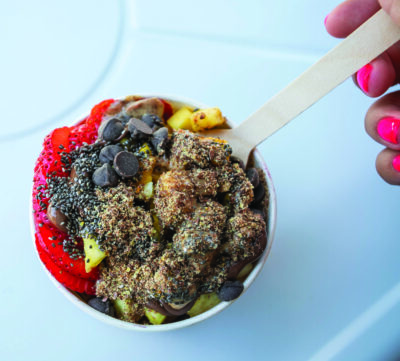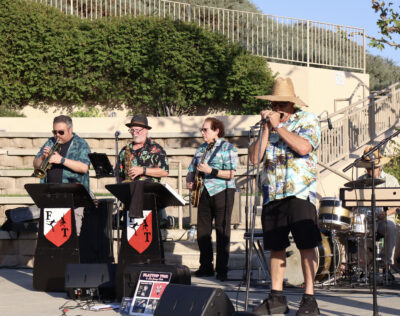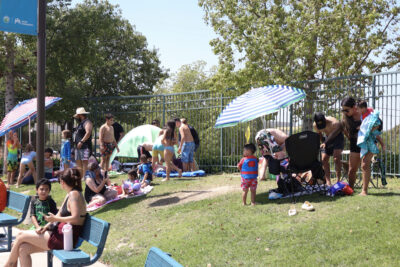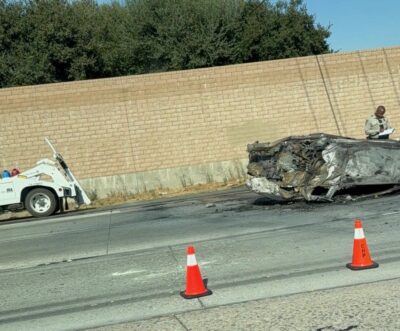Forget the store-bought kits — whipped topping and food coloring are all you need to create the coolest Easter eggs possible. These adorable marbled eggs couldn’t be easier to create; get the kids involved and turn this into a fun family activity.
Cool Whip Easter Eggs
12 hard-boiled white eggs, unpeeled
2 cups white vinegar
3 cups whipped topping
Food coloring
In a large bowl, cover eggs with vinegar. Soak 2 minutes. Drain eggs, then thoroughly dry.
On a large plate or baking sheet, spread whipped topping in an even layer about 1/2″ thick. Drop food coloring in single drops into whipped topping, spacing about 1″ apart, in as many colors as you choose. Using a toothpick, swirl colors to a marbled effect.
Working in batches and wearing latex gloves if desired (we recommend doing half of eggs first, then repeating the decorating process for remaining eggs for a more vibrant color), roll eggs in whipped cream. Let sit 10 to 15 minutes.
Remove from whipped cream and rinse until no whipped topping remains. Let dry on paper towels.
Keep the dyed eggs in the refrigerator when not displaying them; they should keep for up to 1 week. To ensure safety, don’t let the eggs sit at room temperature for more than 2 hours. For longer display, I recommend setting the eggs in a bowl of ice.
What to do with Easter Eggs?
Homemade Easter bread is one of the oldest holiday traditions for very good reason. If you’ve never heard of this Easter tradition, allow me to introduce you. A sweetened, yeasted dough incorporates colored eggs baked right into the bread, resulting in a soft and fluffy bread that is just as adorable to look at as it is incredible to eat. Serve it as the perfect festive centerpiece to your Easter brunch, or as a colorful addition to your Easter dessert spread! If you have any leftover dyed eggs (or are looking for a fun baking project to get the kids involved), then this bread is the ideal holiday activity to celebrate every year.
Ingredients
Cooking spray
1 cup whole milk, heated to 110°
1/2 cup (100 g.) plus 1 tsp. granulated sugar, divided
2 1/2 tsp. active dry yeast (1 [1/4-oz.] packet)
4 1/2 cups (540 g.) all-purpose flour, plus more for dusting
2 tsp. kosher salt
6 large eggs
1/2 cup (1 stick) butter, softened, cut into cubes
1 cup boiling water
2 tsp. distilled white vinegar
Food coloring
Egg wash, for brushing
Sprinkles, for topping
Grease a large bowl with cooking spray. In a small bowl or liquid measuring cup, combine milk and 1 tsp. Sugar; sprinkle yeast on top. Let sit until frothy, about 8 minutes.
In the large bowl of a stand mixer fitted with the dough hook, beat flour, salt, and remaining 1/2 cup sugar. Add yeast mixture and 2 eggs. Beat until a very soft dough forms, about 5 minutes. Increase to medium-high speed and add butter, 1 Tbsp. at a time, beating well after each addition, until dough pulls away from sides of bowl, about 15 minutes.
Transfer dough to greased bowl, cover, and let rise in a warm spot until doubled in size 1 to 1 1/2 hours.
Meanwhile, divide 1 cup boiling water between 2 bowls. Add 1 tsp. vinegar and desired food coloring to each bowl. Add 4 remaining eggs, one at a time, and let sit 5 to 10 minutes, depending on preferred color. Using a slotted spoon, transfer to a wire rack set in a baking sheet.
Arrange a rack in center of oven; preheat to 375°. Line a large baking sheet with parchment. On a lightly floured surface, divide dough into 3 pieces. Roll each piece into a 16″-long rope. Place ropes side by side lengthwise on prepared sheet. Pinch top ends together, then tightly braid ropes together. Bring ends together to form a circle and pinch together.
Press dyed eggs into braid, then cover dough and let rise until doubled in size, about 30 minutes.
Brush with egg wash and top with sprinkles.
Bake bread until golden brown, about 30 minutes. Let cool slightly.
The Easter Bread Tradition
An Italian and Greek tradition, this bread is one of the oldest food traditions when it comes to celebrating Easter. The origins are uncertain, but some say this tradition could have been started as early as the 12th century. The bread varies in its symbolism based on the shape—when baked into a wreath, the bread is supposed to symbolize the crown of thorns. When braided into three long pieces, the dough represents the Holy Trinity. Although the exact origin of the bread is uncertain, one thing is for sure: this bread is an easy, festive addition to any Easter spread.
Storage
To store any leftover Easter bread, first remove the eggs from the center and place them in an airtight container in the fridge for 3 to 4 days. The bread can be stored in an airtight container either at room temperature for 4 to 5 days, or in the freezer for up to 2 months.













